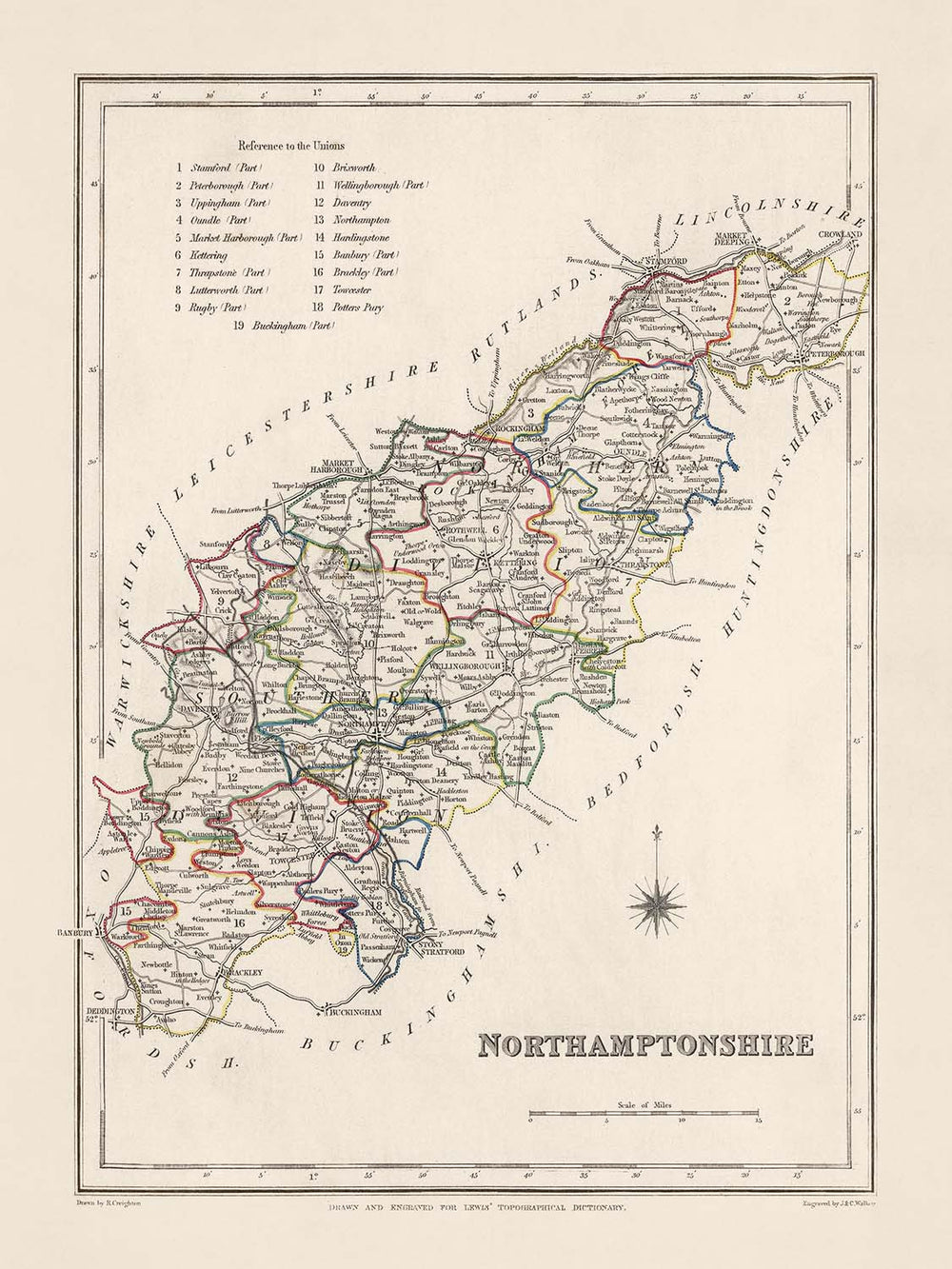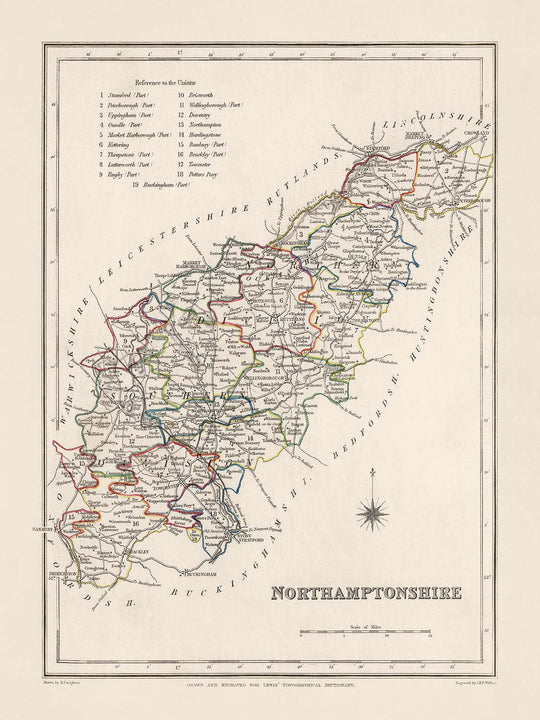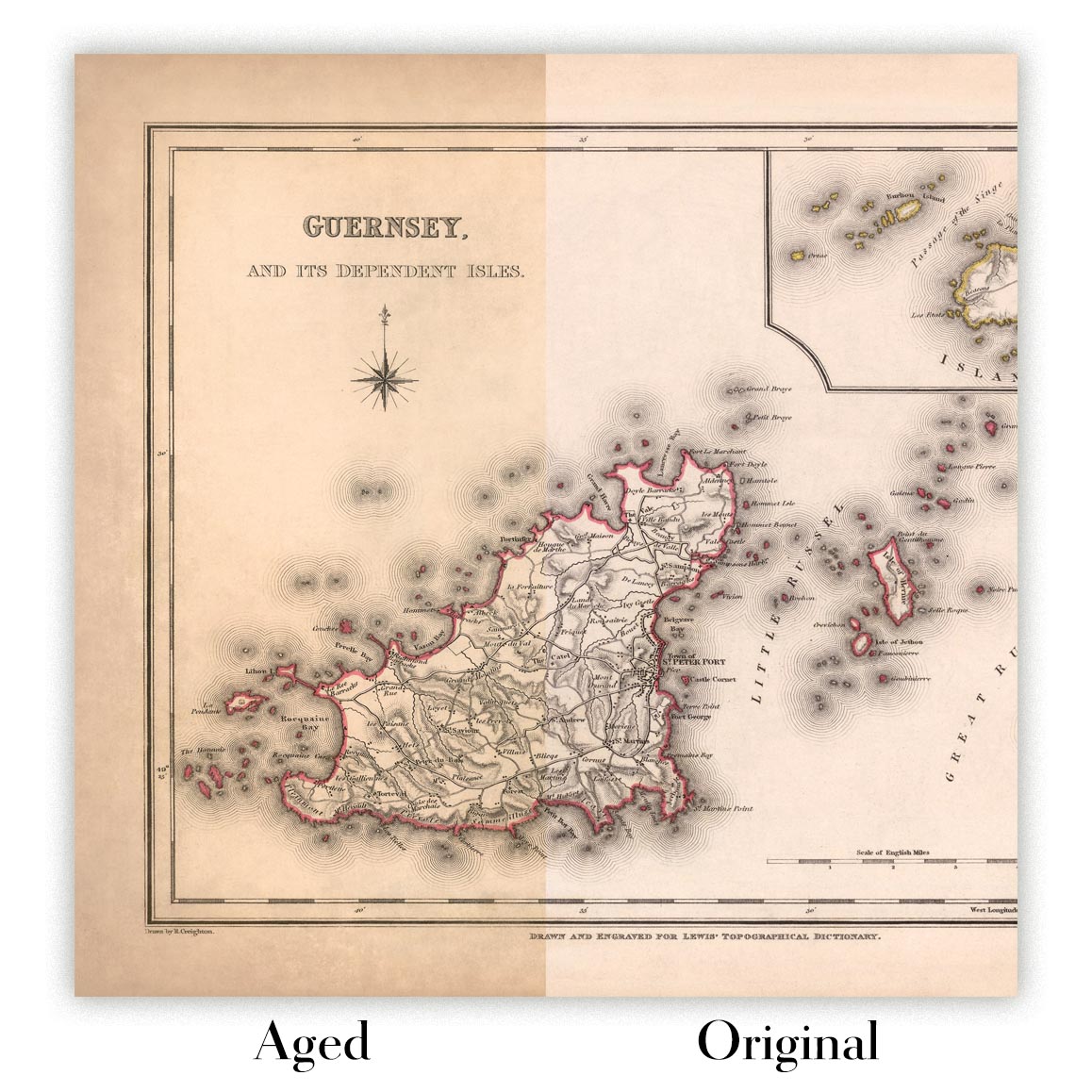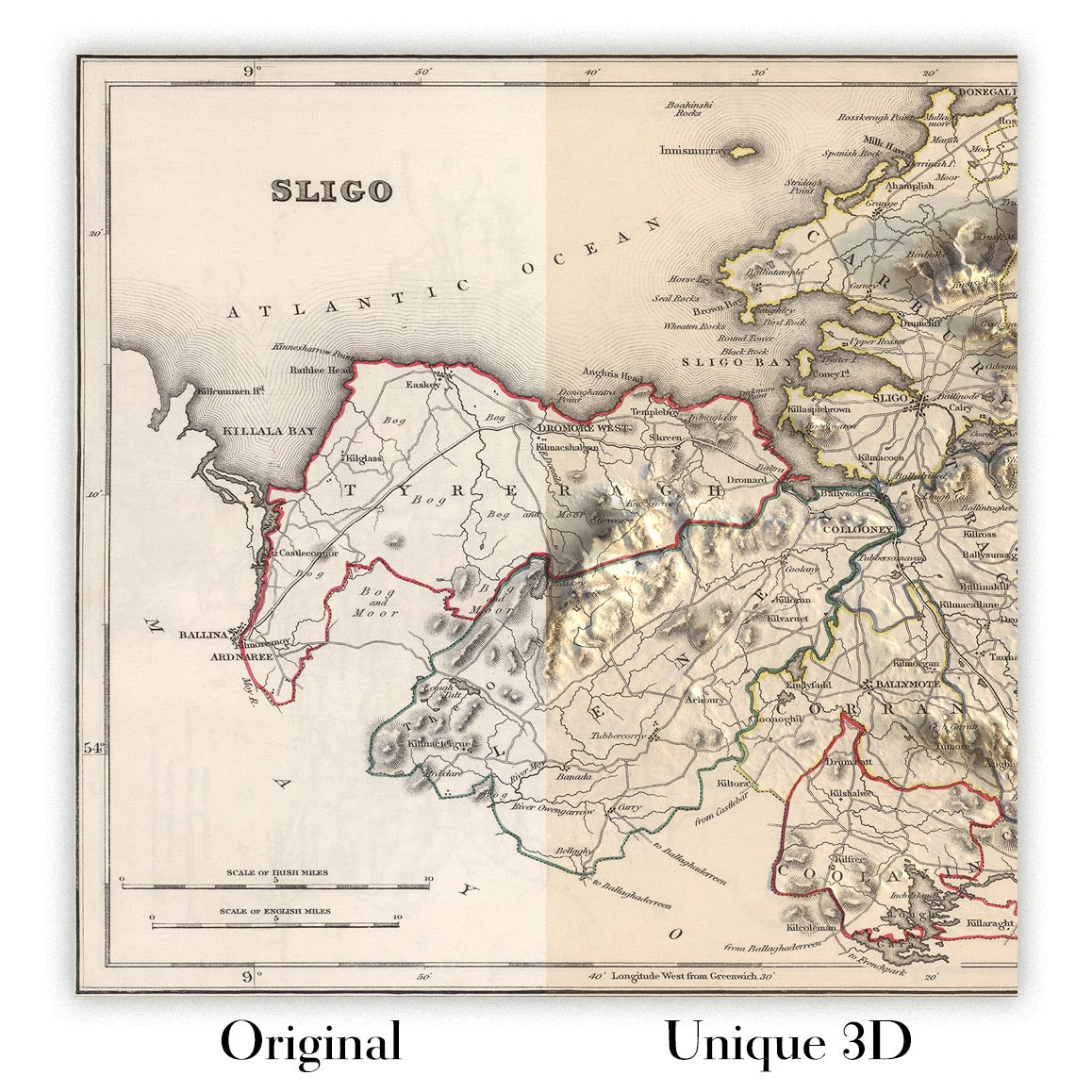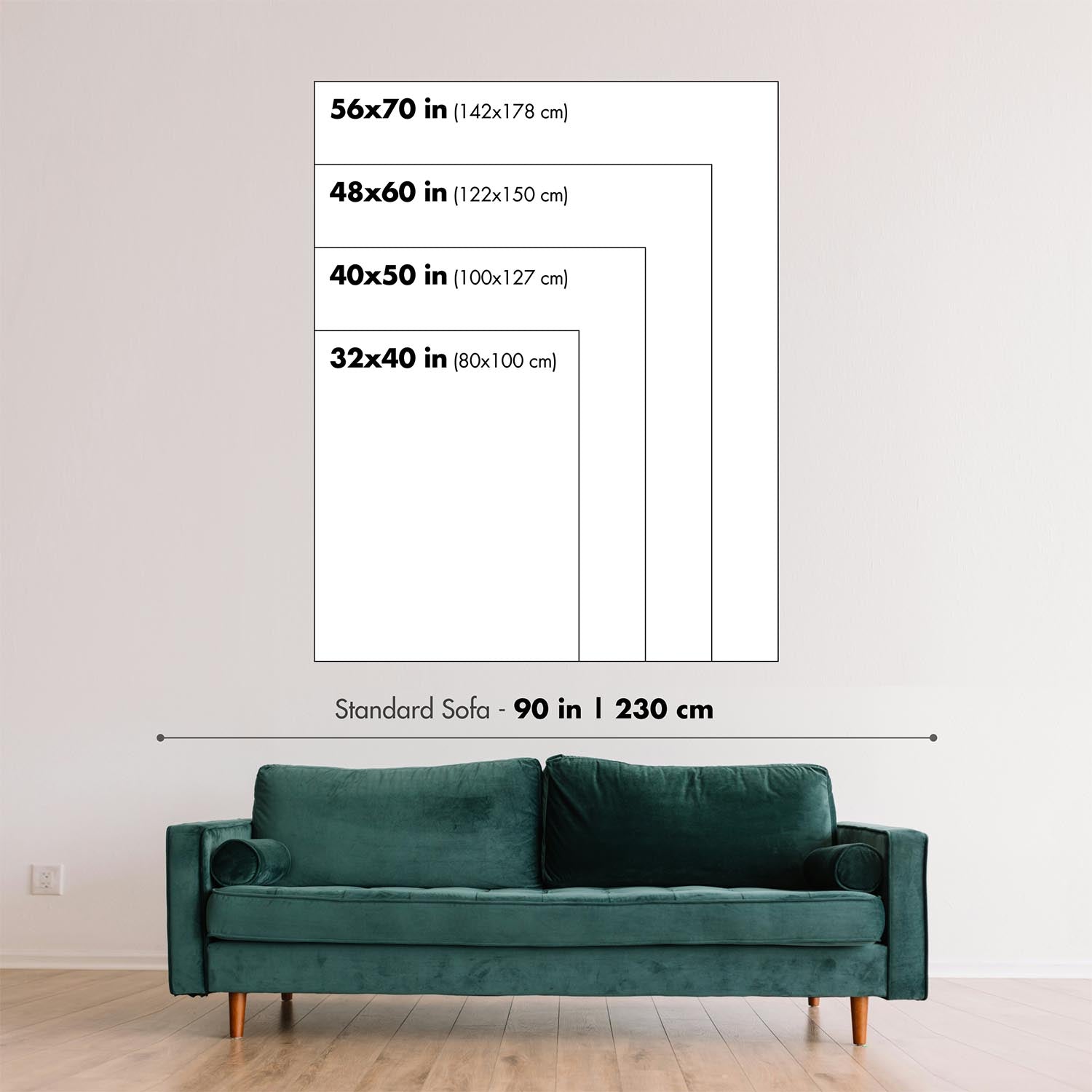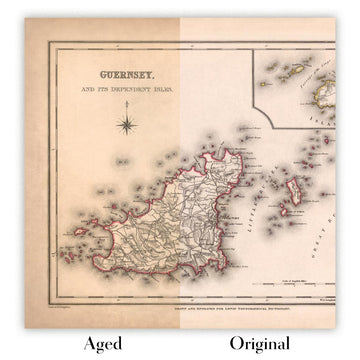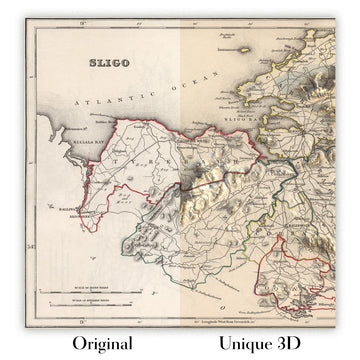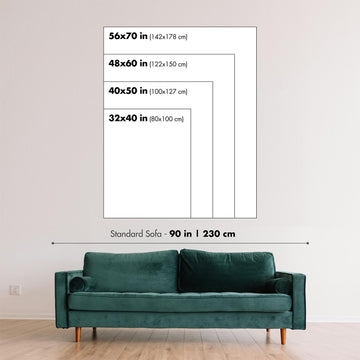- Handmade locally. No import duty or tax
- FREE Delivery by Christmas
- Love it or your money back (90 days)
- Questions? WhatsApp me any time
Own a piece of history
5,000+ 5 star reviews


Discover the rich history of Northamptonshire brought to life with this 1844 map by renowned cartographer, Samuel Lewis. Beautifully drawn, it offers a unique glimpse into the past of one of England's most enduring regions. Highlighting a rich array of towns, cities, and settlements, the map is an intricate tapestry of Northamptonshire's history and heritage, showcasing where many of today's bustling towns and cities first began. Delight in the historical place names that mark locations familiar today; yet, be prepared to not find some modern cities, or excitingly, discover them labelled under their former names.
A perfect addition to any cartophile's collection, this map also serves as an educational tool for those keen on English history. Samuel Lewis’s 1844 map is a testament to the remarkable development and transformation of Northamptonshire from the mid-19th century to present times. Rich in detail, it reflects the geography of the era, offering a fascinating insight into the region's past, the old roadways and waterways, and the significant historical events that occurred within its boundaries.
Bulleted List of Towns, Cities, and Settlements (Ordered by Modern-Day Population):
- Northampton (Founded in 914 AD) - Known as Hamtun in the Domesday Book, Northampton was an important royal borough and trade centre in the Middle Ages.
- Kettering (10th Century AD) - Originally an Anglo-Saxon settlement, Kettering flourished as a result of the booming shoe industry in the 18th and 19th centuries.
- Corby (8th Century AD) - Corby's heritage can be traced back to the Vikings. It was a small village until the 19th-century ironstone industry led to rapid expansion.
- Wellingborough (6th Century AD) - Wellingborough is renowned for its five medieval wells and was an important market town noted for its wool and cloth trade.
- Rushden (9th Century AD) - Inhabited since the Saxon era, Rushden became an important hub for the boot and shoe industry in the 19th century.
- Daventry (Medieval Period) - An ancient market town, Daventry held royal charters granting it status and significance in the county.
- Brackley (1086 AD) - Known for its lace and wool industries, Brackley was originally mentioned in the Domesday Book.
- Desborough (Prehistoric Times) - Dating back to the Bronze Age, Desborough was primarily an agricultural community until the 19th century.
- Towcester (1st Century AD) - A Roman town established on Watling Street, it's one of the oldest continuous settlements in England.
- Raunds (Medieval Period) - A historical settlement known for its leather and footwear industry.
- Rothwell (Saxon Period) - Rothwell, named after the Red Well, was an important center for cloth trade.
- Oundle (1st Century AD) - A market town dating back to Roman times, known for its Georgian streetscapes.
- Burton Latimer (Saxon Era) - Known for its ironstone quarrying, the town prospered during the Industrial Revolution.
- Thrapston (Anglo-Saxon Era) - The town's annual fair and market were mentioned in medieval documents.
- Irthlingborough (6th Century AD) - Known for its historic ironworks, the town was the smallest borough in England by the time of the 1832 Reform Act.
- Higham Ferrers (Pre-Norman Conquest) - Granted a market charter in 1201, it was a royal manor in Saxon times.
- Earls Barton (Anglo-Saxon Era) - Famous for one of the finest Anglo-Saxon churches in England, the All Saints' Church.
- Finedon (Iron Age) - Finedon's St Mary's Church is a notable landmark with its 14th-century tower.
- Kings Sutton (Roman Era) - The village has several well-preserved 17th-century houses.
- Moulton (Saxon Era) - Known for its shoe industry, the village has several historic buildings.
- Silverstone (Roman Era) - The village is now synonymous with its internationally renowned racing circuit.
- Potterspury (Iron Age) - The ancient Watling Street runs through this village, with Iron Age and Roman occupation evidence.
- Brixworth (6th Century AD) - Known for its Anglo-Saxon church, one of the oldest and most complete in the country.
- Cogenhoe (Domesday Book 1086 AD) - The village's name derives from the Old English for "Cuckoo Hill."
- Blisworth (Anglo-Saxon Era) - Known for the Blisworth Tunnel, a marvel of 19th-century engineering.
- Warmington (Roman Era) - It boasts an impressive collection of ironstone cottages and the 13th-century Church of St. Mary.
- Geddington (Medieval Period) - Known for its well-preserved Eleanor Cross, one of the best in England.
- Crick (Roman Era) - Noted for its canal history and the Crick Boat Show, the largest inland waterways event in Britain.
- Paulerspury (Domesday Book 1086 AD) - An old village with many historic buildings, including St James the Great church.
- Bugbrooke (Roman Era) - The site of a large Roman villa, indicating the village's long history.
Notable Features:
- River Nene - The largest river in the county, providing beautiful landscapes and significant wildlife habitats.
- Grand Union Canal - A central waterway during the Industrial Revolution, now popular for boating and walks.
- Rockingham Forest - Once a royal hunting forest, it is now a mixture of ancient woodland and farmland.
Historical Events (1800-1850):
- The Swing Riots (1830) - Agricultural labourers in the county participated in this widespread protest against agricultural mechanisation.
- Opening of the Blisworth Tunnel (1805) - Part of the Grand Union Canal, it greatly improved transport and trade in the region.
- Corby's Ironstone Boom (1850) - The demand for ironstone led to rapid development and population growth in Corby.
Please double check the images to make sure that a specific town or place is shown on this map. You can also get in touch and ask us to check the map for you.
This map looks great at all sizes: 8x10in (20.5x25.5cm), 12x16in (30.5x41cm), 18x24in (45.5x61cm), 16x20in (40.5x51cm), 24x36in (61x91.5cm), 30x40in (76x101.5cm) and 37x50in (94x127cm), but it looks even better when printed large.
I can create beautiful, large prints of this map up to 50in (127cm). Please get in touch if you're looking for larger, customised or different framing options.
The model in the listing images is holding the 18x24in (45.5x61cm) version of this map.
The fifth listing image shows an example of my map personalisation service.
If you’re looking for something slightly different, check out my main collection of UK and Ireland maps.
Please contact me to check if a certain location, landmark or feature is shown on this map.
This would make a wonderful birthday, Christmas, Father's Day, work leaving, anniversary or housewarming gift for someone from the areas covered by this map.
This map is available as a giclée print on acid free archival matte paper, or you can buy it framed. The frame is a nice, simple black frame that suits most aesthetics. Please get in touch if you'd like a different frame colour or material. My frames are glazed with super-clear museum-grade acrylic (perspex/acrylite), which is significantly less reflective than glass, safer, and will always arrive in perfect condition.
This map is also available as a float framed canvas, sometimes known as a shadow gap framed canvas or canvas floater. The map is printed on artist's cotton canvas and then stretched over a handmade box frame. We then "float" the canvas inside a wooden frame, which is available in a range of colours (black, dark brown, oak, antique gold and white). This is a wonderful way to present a map without glazing in front. See some examples of float framed canvas maps and explore the differences between my different finishes.
For something truly unique, this map is also available in "Unique 3D", our trademarked process that dramatically transforms the map so that it has a wonderful sense of depth. We combine the original map with detailed topography and elevation data, so that mountains and the terrain really "pop". For more info and examples of 3D maps, check my Unique 3D page.
For most orders, delivery time is about 3 working days. Personalised and customised products take longer, as I have to do the personalisation and send it to you for approval, which usually takes 1 or 2 days.
Please note that very large framed orders usually take longer to make and deliver.
If you need your order to arrive by a certain date, please contact me before you order so that we can find the best way of making sure you get your order in time.
I print and frame maps and artwork in 23 countries around the world. This means your order will be made locally, which cuts down on delivery time and ensures that it won't be damaged during delivery. You'll never pay customs or import duty, and we'll put less CO2 into the air.
All of my maps and art prints are well packaged and sent in a rugged tube if unframed, or surrounded by foam if framed.
I try to send out all orders within 1 or 2 days of receiving your order, though some products (like face masks, mugs and tote bags) can take longer to make.
If you select Express Delivery at checkout your order we will prioritise your order and send it out by 1-day courier (Fedex, DHL, UPS, Parcelforce).
Next Day delivery is also available in some countries (US, UK, Singapore, UAE) but please try to order early in the day so that we can get it sent out on time.
My standard frame is a gallery style black ash hardwood frame. It is simple and quite modern looking. My standard frame is around 20mm (0.8in) wide.
I use super-clear acrylic (perspex/acrylite) for the frame glass. It's lighter and safer than glass - and it looks better, as the reflectivity is lower.
Six standard frame colours are available for free (black, dark brown, dark grey, oak, white and antique gold). Custom framing and mounting/matting is available if you're looking for something else.
Most maps, art and illustrations are also available as a framed canvas. We use matte (not shiny) cotton canvas, stretch it over a sustainably sourced box wood frame, and then 'float' the piece within a wood frame. The end result is quite beautiful, and there's no glazing to get in the way.
All frames are provided "ready to hang", with either a string or brackets on the back. Very large frames will have heavy duty hanging plates and/or a mounting baton. If you have any questions, please get in touch.
See some examples of my framed maps and framed canvas maps.
Alternatively, I can also supply old maps and artwork on canvas, foam board, cotton rag and other materials.
If you want to frame your map or artwork yourself, please read my size guide first.
My maps are extremely high quality reproductions of original maps.
I source original, rare maps from libraries, auction houses and private collections around the world, restore them at my London workshop, and then use specialist giclée inks and printers to create beautiful maps that look even better than the original.
My maps are printed on acid-free archival matte (not glossy) paper that feels very high quality and almost like card. In technical terms the paper weight/thickness is 10mil/200gsm. It's perfect for framing.
I print with Epson ultrachrome giclée UV fade resistant pigment inks - some of the best inks you can find.
I can also make maps on canvas, cotton rag and other exotic materials.
Learn more about The Unique Maps Co.
Map personalisation
If you're looking for the perfect anniversary or housewarming gift, I can personalise your map to make it truly unique. For example, I can add a short message, or highlight an important location, or add your family's coat of arms.
The options are almost infinite. Please see my map personalisation page for some wonderful examples of what's possible.
To order a personalised map, select "personalise your map" before adding it to your basket.
Get in touch if you're looking for more complex customisations and personalisations.
Map ageing
I have been asked hundreds of times over the years by customers if they could buy a map that looks even older.
Well, now you can, by selecting Aged before you add a map to your basket.
All the product photos you see on this page show the map in its Original form. This is what the map looks like today.
If you select Aged, I will age your map by hand, using a special and unique process developed through years of studying old maps, talking to researchers to understand the chemistry of aging paper, and of course... lots of practice!
If you're unsure, stick to the Original colour of the map. If you want something a bit darker and older looking, go for Aged.
If you are not happy with your order for any reason, contact me and I'll get it fixed ASAP, free of charge. Please see my returns and refund policy for more information.
I am very confident you will like your restored map or art print. I have been doing this since 1984. I'm a 5-star Etsy seller. I have sold tens of thousands of maps and art prints and have over 5,000 real 5-star reviews. My work has been featured in interior design magazines, on the BBC, and on the walls of dozens of 5-star hotels.
I use a unique process to restore maps and artwork that is massively time consuming and labour intensive. Hunting down the original maps and illustrations can take months. I use state of the art and eye-wateringly expensive technology to scan and restore them. As a result, I guarantee my maps and art prints are a cut above the rest. I stand by my products and will always make sure you're 100% happy with what you receive.
Almost all of my maps and art prints look amazing at large sizes (200cm, 6.5ft+) and I can frame and deliver them to you as well, via special oversized courier. Contact me to discuss your specific needs.
Or try searching for something!









